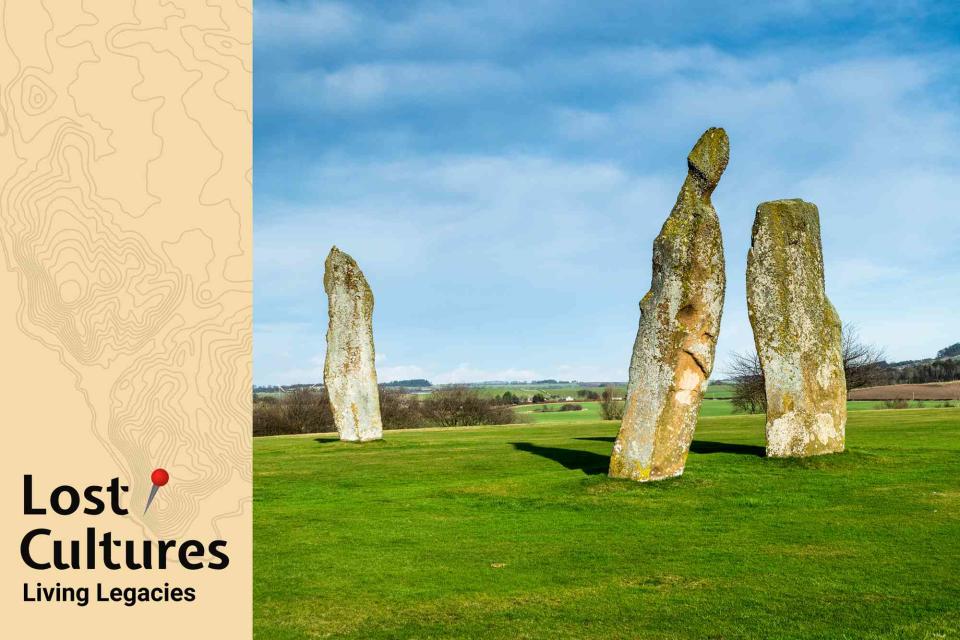Meet the Mysterious 'Painted People' of Scotland — Who Were Almost Erased From History
Who were The Picts? Learn more about this fascinating, long-forgotten society, in this week's episode of Lost Cultures: Living Legacies.

James Elkington/Getty Images
Every Wednesday on the Lost Cultures: Living Legacies podcast, host Alisha Prakash, Travel + Leisure's associate editorial director, explores a unique cultural identity around the world and shares how you can learn more about it on your travels, too.
It's entirely possible you've never heard of the Picts — and that's with good reason. These people, once so prominent in Scotland, were completely wiped from the map, all but disappearing into the sands of time. That is, until researchers like Dr. Gordon Noble, a professor of archeology at the University of Aberdeen in Scotland, came along.
"I grew up in Northeast Scotland myself, but I never heard of the Picts at school. No one taught us about the Picts, or history going that far back," Noble said. "It wasn't until I went to university and I studied art history … and we did a course on early medieval art and sculpture and metal work, and we learned about the picture stones then. And as soon as I saw those, I was absolutely hooked."
Following the course, Noble dedicated his education to learning all he could about the picture stones and the people behind them — the Picts.
But they weren't just known as the Picts for their stone artwork.
"It's a nickname. Essentially, it means, 'the painted people.' So it's a bit of a pejorative nickname by the Romans, indicating that these were 'barbarians' who tattooed themselves or painted themselves and were 'uncivilized' and un-Roman. The barbarians of the north."
Indeed, the Picts became known for their brutal war tactics, defending their land at all costs. By the 5th century, historians like Tim Clarkson say, the Picts had a thriving kingdom. However, by the 10th century, through war, colonization, and the merging of the Scots, the Picts seem to have vanished forever.
"Strangely enough, the people of that kingdom start calling themselves Scots even though quite a lot of them have Pictish ancestry. And that's one of the mysteries of the Picts, in a way, as to why the name vanished when they themselves were still there," Clarkson said. "It was just that their kings, we think, decided that a new political order had to be brought into place. And as part of that, the old Pictish identity was somehow redundant and was replaced by this idea of this unified Pictish Scottish nation that eventually became Scotland. And that really brings us to the end of Pictish history."
The end of the line for the Picts? Yes. The end of the line for their fascinating place in history? No. Following the relatively recent discovery of their beautiful symbol stones, carved with intricate drawings, historians and others yearned to know more. It was all especially intriguing to those interested in solving riddles.
"Since the 19th century, and ... before, people have been trying to understand what on earth the symbolic system meant and trying to crack the code behind that," Noble said. "There has been progress in the last decade, in particular, with more and more settlements being found. Sites like Rhynie, Burghead, and Aberdeenshire that we've been leading excavations on. So finally, I think we're beginning to make some progress and understand more about the Picts and their lifestyles and their traditions."
To learn more about the Picts, listen to Prakash's conversation with guests Gordon Noble and Tim Clarkson in Lost Cultures: Living Legacies, available on Apple Podcasts, Spotify, Amazon Music, and everywhere podcasts are available.
Editor's Note: Please be mindful that this transcript does not go through our standard editorial process and may contain inaccuracies and grammatical errors.
For more Travel & Leisure news, make sure to sign up for our newsletter!
Read the original article on Travel & Leisure.


